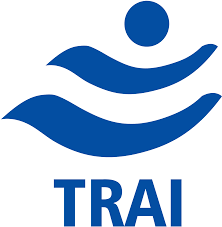TRAI Releases Independent Drive Test Report for J&K: Airtel Leads in Call Setup Success
Between 10th and 12th June 2025, TRAI teams undertook rigorous drive tests covering 41.3 kilometers of city routes and 302 kilometers along highways.

- Country:
- India
The Telecom Regulatory Authority of India (TRAI) has published the results of its Independent Drive Test (IDT) for the Jammu & Kashmir Licensed Service Area (LSA), conducted in June 2025. The comprehensive tests, supervised by TRAI’s Regional Office in Delhi, assessed real-world mobile network performance across a variety of environments, including urban zones, institutional hotspots, public transport hubs, and high-speed highway corridors.
Extensive Field Testing Across Diverse Terrain
Between 10th and 12th June 2025, TRAI teams undertook rigorous drive tests covering 41.3 kilometers of city routes and 302 kilometers along highways. In addition, five hotspot locations and a 2-kilometer walk test were performed to evaluate network consistency under varied conditions. The drive tests assessed multiple generations of mobile technology including 2G, 3G, 4G, and 5G, providing a holistic picture of user experience across different handset capabilities.
The findings have been formally communicated to all telecom service providers (TSPs) operating in Jammu & Kashmir, aiming to drive improvements and ensure regulatory compliance.
Key Performance Metrics Evaluated
The IDT focused on both voice and data service parameters:
-
Voice Services: Metrics such as Call Setup Success Rate (CSSR), Drop Call Rate (DCR), Call Setup Time, Call Silence Rate, Speech Quality measured by Mean Opinion Score (MOS), and overall coverage were examined.
-
Data Services: Download and upload throughput, latency, jitter, packet drop rate, and video streaming delay were measured to reflect data network robustness and reliability.
Call Setup Success Rates and Drop Call Rates
In the auto-selection mode encompassing 5G, 4G, 3G, and 2G technologies, Airtel led with a Call Setup Success Rate of 57.11%, followed by Reliance Jio Infocomm Limited (RJIL) at 49.78%, and Bharat Sanchar Nigam Limited (BSNL) at 47.03%. This metric indicates the proportion of successfully connected calls from all call attempts, reflecting network efficiency in establishing voice connections.
Drop Call Rate, a critical quality parameter indicating the percentage of calls terminated unexpectedly, varied with BSNL demonstrating the lowest rate at 4.67%, followed by RJIL at 7.17%, and Airtel at 9.70%.
Data Service Performance Insights
While specific data throughput values were not disclosed in the summary, the IDT encompassed detailed testing of download and upload speeds, latency—which affects responsiveness—jitter impacting voice and video call stability, packet drop rate indicating data loss, and video streaming delays that influence multimedia experience. These data-centric metrics are vital as Jammu & Kashmir progressively adopts advanced mobile technologies including 5G.
Implications and Next Steps
TRAI’s drive tests serve as a crucial tool for continuous monitoring of mobile network quality, encouraging operators to optimize their infrastructure and service delivery. The Jammu & Kashmir LSA poses unique challenges due to its varied geography and demographic spread, making such thorough assessments essential to ensure equitable connectivity.
Operators are expected to analyze these findings and implement targeted measures to enhance service quality. TRAI continues to advocate for improved transparency and accountability among service providers, striving to elevate the overall telecom user experience across the country.
Commitment to Improved Connectivity in Jammu & Kashmir
The release of the IDT report reinforces TRAI’s commitment to fostering competitive, high-quality telecommunications services in Jammu & Kashmir, aligning with India’s broader digital inclusion goals. With ongoing infrastructure investments and regulatory oversight, residents can anticipate incremental improvements in voice clarity, call reliability, and high-speed data access.










